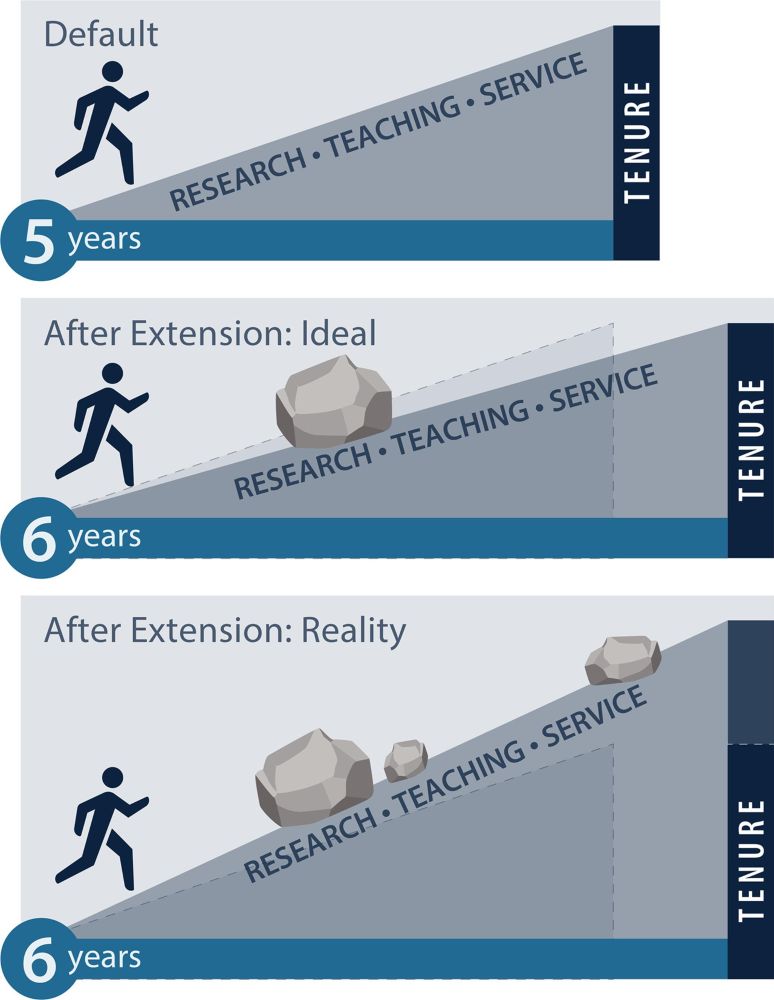
Leadership frames this as part of their deep support to junior faculty. But how, exactly, is more time (& delayed promotion) are meaningful support in response to reduced & uncertain research resources?
A reminder that clock extensions are not the easy solution some think them to be: www.pnas.org/doi/10.1073/...
We must do better by junior faculty.

Leadership frames this as part of their deep support to junior faculty. But how, exactly, is more time (& delayed promotion) are meaningful support in response to reduced & uncertain research resources?

But these days w/little kids it’s more like “every plan is a tiny prayer to our immune systems” and let me tell you they are an uncaring lot.
But these days w/little kids it’s more like “every plan is a tiny prayer to our immune systems” and let me tell you they are an uncaring lot.

